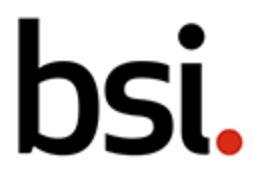Dear Member,
Please be advised that a New Work Item Proposal has been loaded to the BSI Standards Development Portal for comment.
Any comments received will be submitted to the national committee AMT/4 “Industrial data and manufacturing interfaces” for consideration when deciding the UK response to the associated Standards Development Organisation.
Proposal: NWIP: Transpose CEN/TR 17859:2022 into IS (VA ISO lead) II – Enterprise modelling and architecture — Constructs for Service Modelling
Please visit: NWIP: Transpose CEN/TR 17859:2022 into IS (VA ISO lead) II
Comment period end date: 19/01/2025
Scope
This document specifies constructs for modelling product-related service systems in business terms, recognising the service environment and the product lifecycle. The constructs and their meta-model are consistent with the Constructs for Enterprise Modelling (IS 19440:2020) and a model-driven service engineering architecture.
This document is intended for use by business users to address their business concerns and decision-making, and by systems engineers and information technology researchers using a model-driven engineering approach in the design, development and deployment of service systems in virtual manufacturing enterprises, business ecosystems and other application areas.
Purpose
This standard specifies constructs for modelling and specifying product-related service systems in general business terms. The standard anticipates that many manufacturing enterprises will progressively migrate from traditional product-centric business to product-based, service-oriented virtual enterprises and ecosystems. This standard focuses on modelling of manufacturing services that a company can develop to support its products.
A standardized set of constructs for service modelling can foster the development of more compatible products in enterprise service modelling and hence reduce problems in the interoperation of such ICT products, for example by providing a common modelling language for the design and operation of the system or formalizing some service system interfaces as accessible Application Programme Interfaces. The constructs with their associated meta-model can reduce costly and fragmented development in this product-based, service-oriented domain. The standard can facilitate not only the modelling of services and service systems but also can support the development of interoperable software solutions among co-operating organizations. In addition, the standard can have a positive impact on improving interoperability of model-based, service-oriented products, enabling virtual factories and enterprises to adapt to the future internet infrastructure.
If you have any comment or need more information, please contact Sami Ortiz at [email protected]

